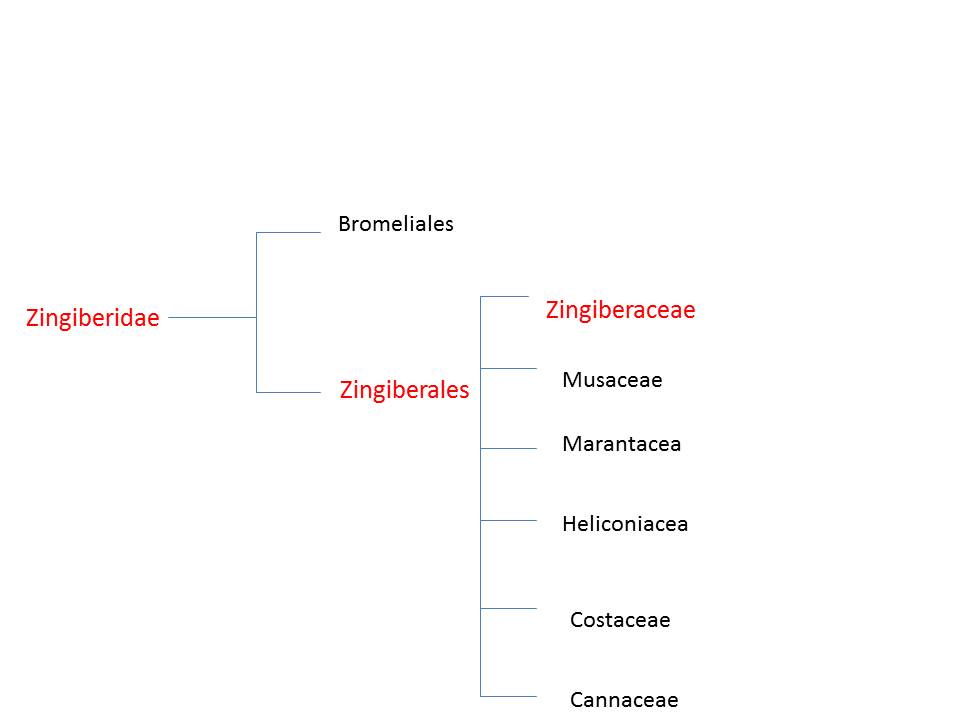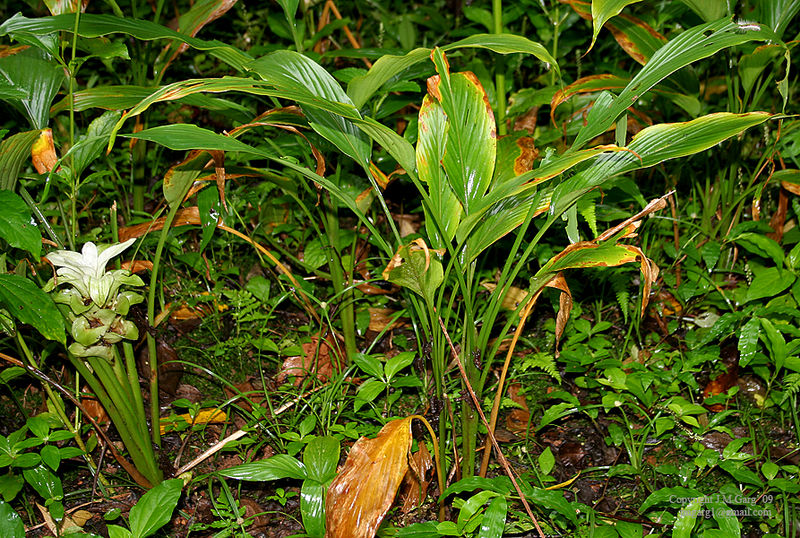
Classification
Domain: eukarya
Kingdom: Plantae-Plants
Subkingdom: Tracheobionta-Vascular plants

Division: Magnoliophyta-Flowering plants
Subclass: Zingiberidae
Family: Zingiberaceae - Ginger family
Genus: Curcuma L. - Curcuma
Species: Curcuma Longa L. - Common Turmeric
Domain: Eukarya
Multicellular, true nucleus, member of bond
organelles like chloroplasts and mitochondria.
Kingdom: plantae
T
Subkingdom: Tracheobionta-Vascular
plants.
It has special tissue to transport water,
minerals, and photosynthetic materials through the plant. Tracheobionta is the
scientific name for vascular plant.
Super division: Spermatophyta-Seed
plants.
Seed plant means that plant has the ability to
produce seeds. The scientific name for seed plant is spermatophyte.
There are two kinds of seed plant: gymnosperm and angiosperm.
Division:
Magnoliophyta-Flowering
plants.
Magnoliophyta is the scientific name for
angiosperm or flowering plant. The angiosperm are distinguished by their
leaves, stems, roots, tissue, and vascular.
Class: Liliopsida-Monocotyledons.
Monocotyledons have only one seed leaf, and it
does not have cambium tissue.
Subclass: Zingiberidae.

Order: Zingiberales
It contains of 8 families and 2000 species. It
is closely to the bromeliads and families native in tropical region
around the world.
Family:
Zingiberaceae
- Ginger family
It is the largest family of Zingiberales. It IS
found in the old world especially Southeast Asia.

Genus: Curcuma L. – Curcuma
It is low, rhizomatous herbs. Its roots are found
with tubers. Also, their leaf bland has violent band on their 2
sides of the midrib.
Species: Curcuma longa L. - Common
Turmeric
Itis 2 feet long, lanceolate, petioled ,
uniform green. flowers are yellow, and they are three or five
surrounded by bracteolate.
Now we know Curcuma Longa classification, to learn more about its habitat click here.
